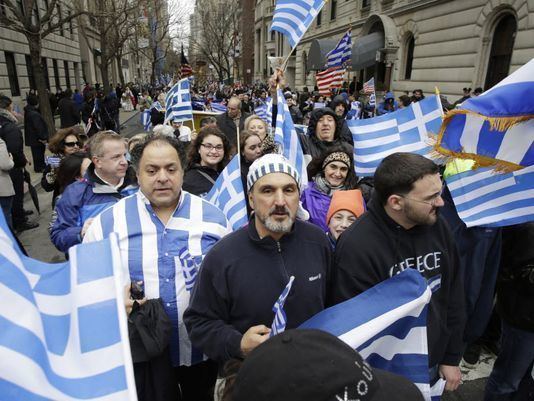 | ||
7 things greek americans know to be true
Greek Americans (Greek: Ελληνοαμερικάνοι, Ellinoamerikanoi) are Americans of full or partial Greek ancestry. About 1.3 million American people are of Greek descent, although there are estimates that raise this number to 3 million, and 321,144 people older than five spoke Greek at home in 2010.
Contents
- 7 things greek americans know to be true
- Greek americans
- Early history
- 19th century
- 20th century
- 21st century
- Top ten metropolitan areas by number of people of Greek ancestry 2010 2012 American Community Survey
- States by number of people of Greek ancestry 2000 Census
- Communities by percentage of people of Greek ancestry
- Communities by percentage of those born in Greece
- Atlantis newspaper
- In popular culture
- Greek nationality
- Organizations
- References
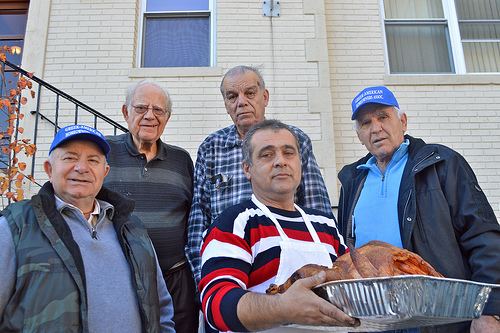
Greek Americans have the highest concentrations in the New York City, Boston, and Chicago regions, but have settled in major metropolitan areas across the United States. In 2000, Tarpon Springs, Florida was home to the highest per capita representation of Greek Americans in the country (11%). The United States is home to the largest overseas Greek community, ahead of Australia, Cyprus, Albania, Canada, Germany and the United Kingdom.
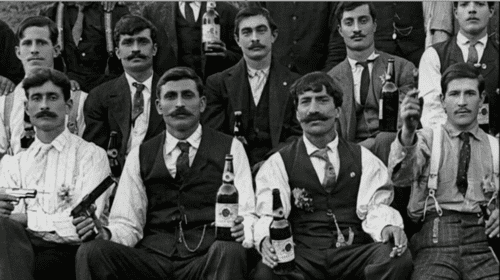
Greek americans
Early history
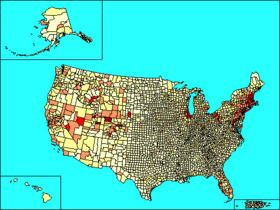
The first Greek known to have been to what is now the United States was Don Theodoro, a sailor who landed on Florida with the Narváez expedition in 1528. He died during the expedition, as did most of his companions.

In 1592, Greek captain Juan de Fuca (Ioannis Fokas or Apostolos Valerianos) sailed up the Pacific coast under the Spanish flag, in search of the fabled Northwest Passage between the Pacific and the Atlantic. He reported discovering a body of water, a strait which today bears his name: the Strait of Juan de Fuca, which today forms part of the Canada–United States border.
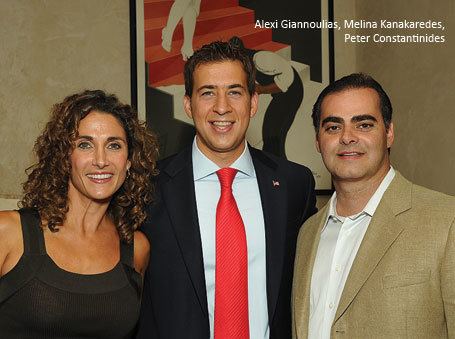
About 500 Greeks from Smyrna, Crete, and Mani settled in New Smyrna Beach, Florida in 1768. The colony was unsuccessful, and the settlers moved to St. Augustine in 1776. The St Photios Greek Chapel exists as a remnant of their prescense, and is believed to be the oldest still standing Greek Orthodox religious structure in the United States.
19th century
The first significant Greek community to develop was in New Orleans, Louisiana during the 1850s. By 1866, the community was numerous and prosperous enough to have a Greek consulate and the first official Greek Orthodox Church in the United States. During that period, most Greek immigrants to the New World came from Asia Minor and those Aegean Islands still under Ottoman rule. By 1890, there were almost 15,000 Greeks living in the U.S.
Immigration picked up again in the 1890s and early 20th century, due largely to economic opportunity in the U.S., displacement caused by the hardships of Ottoman rule, the Balkan Wars, and World War I. Most of these immigrants had come from southern Greece, especially from the Peloponnesian provinces of Laconia and Arcadia. 450,000 Greeks arrived to the States between 1890 and 1917, most working in the cities of the northeastern United States; others labored on railroad construction and in mines of the western United States; another 70,000 arrived between 1918 and 1924. Each wave of immigration contributed to the growth of Hellenism in the U.S.
Greek immigration at this time was over 90% male, contrasted with most other European immigration to the U.S., such as Italian and Irish immigration, which averaged 50% to 60% male. Many Greek immigrants expected to work and return to their homeland after earning capital and dowries for their families. However, the loss of their homeland due to the Greek Genocide and the 1923 Population exchange between Greece and Turkey, which displaced 1,500,000 Greeks from Anatolia, Eastern Thrace and Pontus caused the initial economic immigrants to reside permanently in America. The Greeks were de jure denaturalized from their homelands and lost the right to return, and their families were made refugees. Additionally, the first widely implemented U.S. immigration limits against non Western European immigrants were made in 1924, creating an impetus for immigrants to apply for citizenship, bring their families and permanently settle in the U.S. Fewer than 30,000 Greek immigrants arrived in the U.S. between 1925 and 1945, most of whom were "picture brides" for single Greek men and family members coming over to join relatives.
20th century
The events of the early 1920s also provided the stimulus for the first permanent national Greek American religious and civic organizations. Greeks again began to arrive in large numbers after 1945, fleeing the economic devastation caused by World War II and the Greek Civil War. From 1946 until 1982, approximately 211,000 Greeks emigrated to the United States. These later immigrants were less influenced by the powerful assimilation pressures of the 1920s and 1930s and revitalized Greek American identity, especially in areas such as Greek-language media.
Greek immigrants founded more than 600 diners in the New York metropolitan area in the 1950s through the 1970s. Immigration to the United States from Greece peaked between the 1950s and 1970. After the 1981 admission of Greece to the European Union, annual U.S. immigration numbers fell to less than 2,000. In recent years, Greek immigration to the United States has been minimal; in fact, net migration has been towards Greece. Over 72,000 U.S. citizens currently live in Greece (1999); most of them are Greek Americans.
The predominant religion among Greeks and Greek Americans is Greek Orthodox Christianity. There are also a number of Americans who descend from Greece's smaller Sephardic and Romaniote Jewish communities.
21st century
In the aftermath of the Greek financial crisis, there has been a resurgence of Greek emigration to New York City since 2010, accelerating in 2015, and centered upon the traditional Greek enclave of Astoria, Queens. According to The New York Times, this new wave of Greek migration to New York is not being driven as much by opportunities in New York as it is by a lack of economic options in Greece itself.
Top ten metropolitan areas by number of people of Greek ancestry (2010-2012 American Community Survey)
States by number of people of Greek ancestry (2000 Census)
- New York 159,763
- California 125,284
- Illinois 95,064
- Massachusetts 78,176
- Florida 76,908
- New Jersey 61,510
- Pennsylvania 56,911
- Ohio 53,547
- Michigan 44,214
- Indiana 32,319
Communities by percentage of people of Greek ancestry
The US communities with the highest percentage of people claiming Greek ancestry are:
- Tarpon Springs, Florida 10.40%
- Campbell, Ohio 9.30%
- Lincolnwood, Illinois 7.60%
- Plandome Manor, New York 7.50%
- Englewood Cliffs, New Jersey 7.20%
- Allenwood, New Jersey 6.60%
- South Barrington, Illinois 6.00%
- Palos Hills, Illinois 5.40%
- Nahant, Massachusetts 5.30%
- Alpine, New Jersey; Holiday, Florida; and Munsey Park, New York 5.20%
- East Marion, New York 5.00%
- Grosse Pointe Shores, Michigan and Grosse Pointe Township, Michigan; Palos Park, Illinois; and Upper Brookville, New York 4.90%
- Harbor Isle, New York 4.70%
- Lake Dalecarlia, Indiana 4.50%
- Barnum Island, New York 4.40%
- Peabody, Massachusetts 4.30%
- Livingston Manor, New York and University Gardens, New York 4.20%
- Oak Brook, Illinois 4.00%
- Dracut, Massachusetts 3.90%
- Harwood Heights, Illinois and Oyster Bay Cove, New York 3.80%
- Fort Lee, New Jersey; Hiller, Pennsylvania; Ipswich, Massachusetts; Long Grove, Illinois; Oakhurst, New Jersey; and Yorkville, Ohio 3.70%
- Broomall, Pennsylvania; Garden City South, New York; Norwood Park, Chicago, Illinois (neighborhood); and Plandome, New York 3.60%
- Flower Hill, New York; Manhasset, New York; Monte Sereno, California; Norridge, Illinois; Palisades Park, New Jersey; Palos Township, IL; and Windham, New York 3.50%
- Morton Grove, Illinois; Terryville, New York; and Wellington, Utah 3.40%
- Banks Township, PA (Carbon County, PA); Harmony, Pennsylvania (Beaver County, PA); Plandome Heights, New York; and Watertown, Massachusetts 3.30%
- Niles, Illinois and Niles Township, Illinois 3.20%
- Groveland, Massachusetts 3.10%
- Albertson, New York; Caroline, New York; Graeagle, California; Lynnfield, Massachusetts; Marple Township, Pennsylvania; and Stanhope, New Jersey 3.00%
- Foster Township, Pennsylvania; Manhasset Hills, New York; West Falmouth, Massachusetts; Winfield, Indiana; and Worth Township, Indiana (Boone County, IN) 2.90%
Communities by percentage of those born in Greece
The U.S. communities with the largest percentage of residents born in Greece are:
Atlantis newspaper
The Atlantis was the first successful Greek language daily newspaper published in the United States. The newspaper was founded in 1894 by Solon J. and Demetrius J. Vlasto, descendants of the Greek noble family, Vlasto. The paper was headed by a member of the Vlasto family until it closed in 1973. Published in New York City, it had a national circulation and influence. Atlantis supported the royalist faction in Greek politics until the mid-1960s. Atlantis editorial themes included naturalization, war relief, Greek-American business interests, and Greek religious unity.
In popular culture
Greek nationality
Any person who is ethnically Greek born outside of Greece may become a Greek citizen through naturalization by proving that a parent or grandparent was born as a national of Greece. The Greek ancestor's birth certificate and marriage certificate are required, along with the applicant's birth certificate and the birth certificates of all generations in between until the relation between the applicant and the person with Greek citizenship is proven.
Organizations
There are hundreds of regional, religious and professional Greek American organizations. Some of the largest and most notable include:
